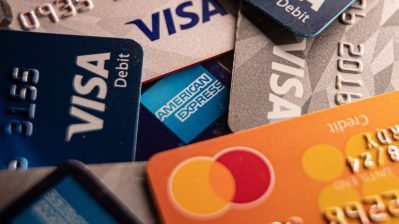TEXT OF STORY
Tess Vigeland: They teach reading, writing, and arithmatic in school, but not how to read one of the most important documents we ever have to grapple with as adults-a credit card bill. The average American family with at least one credit card now has about $9,200 in credit card debt. And while a lot of that comes from plain old-fashioned bad financial planning, at least some of it is due to fees and penalties and interest-rate hikes that might have been avoided if consumers just read the fine print on their bills. Marketplace’s Mitchell Hartman joins us with a lesson in credit card lingo 101.
Mitchell Hartman: If you only have five seconds to read your credit card bill:
Chris Lombardo: The most important thing that people need to look at is, they need to look at the interest rate. The interest rate is going to tell you how much you’re paying extra on the amount that is the balance for that credit card.
That’s Chris Lombardo, Seattle-based director of the nonprofit agency Clearpoint Credit Counseling. He’ll be back to decipher some actual credit-card statements in a minute, but first, let’s meet one of his clients, someone who’s learned the hard way how important it is to pay attention to the rates and fees buried in the fine print.
John Mitchell is 51. About a year ago he lost his job as a warehouseman for a plumbing company. I met him outside his tidy ranch house on the outskirts of Portland, Ore.
Hartman: Why are we outside?
John Mitchell: ‘Cause my wife doesn’t allow me to smoke inside.
Maybe that’s because of the heart condition, which has not been helping his financial condition.
Mitchell: I have an internal defibrillator in my chest that has to be checked every three months, and that’s $300 a shot.
Just one of the things he started putting on a credit card when he lost his job.
Mitchell: We had to replace the refrigerator, we had to have some plumbing work done, our furnace went out. Unfortunately, I hate to admit it, but we put our house payment on it a couple of times.
Mitchell and his wife were trying to keep current on eight different credit cards, which, believe it or not, is pretty typical for the average family paying at least the minimum due each month.
Mitchell: Then they nail you with the late fees, and then you got to wait until the last minute to pay it.
Hartman: Did you actually see the interest rates change and were you able to figure that out on the bills?
Mitchell: No, but the payments went up and so I assume the interest rates were going up, because we weren’t charging any more on them.
When the Mitchells’ debt topped 15 grand they went to see a counselor at Chris Lombardo’s agency. Back at his office, Lombardo points out that the interest rate is actually one of the easiest things to find amid all the clutter on a typical bill. It’s on the first page, under a simple heading: “Finance Charge Summary.”
Lombardo: They have in very bold print the annual percentage rate for this billing period. And it’s 22.85 percent.
Hartman: What else do we see, there’s some other numbers here — there’s “computed on average daily balance,” there’s “periodic rate.”
Lombardo: The number that consumers really want to look at is that “corresponding annual percentage rate,” or what we call the APR. That’s going to tell you how much interest you’re paying over a year.
It’s not enough to check this once in a while. Credit card companies change their rates month to month if you miss a payment, even if you’re late paying another company’s bill. It can even happen if your shopping habits change — say, you start charging discount merchandise at Target, when you used to shop at Coach.
Lombardo: Most credit card companies will actually put somewhere on the bill a separate statement indicating that your interest rate has increased. It’s usually pretty small print.
So now let’s turn one of these things over and see what other small print there is. I’m using one of my own bills now. There’s a heading for “Method for Calculation of Finance Charges” — it explains how they figure out my interest payment. Some cards use the “Double Billing-Cycle Method,” charging interest on two months’ average balance, even if I pay up before my current bill is due. Then there’s the “Billing Rights Summary.” Following these instructions to the letter is key if I ever want to dispute a charge. The back of the bill is also where changes to late fees and default penalties are buried.
But what if your mounting credit card debts require more than a pair of bifocals to help you read the bill? Lombardo says, if you’re charging stuff like groceries and rent — if you’re only making the minimum payment or missing payments:
Lombardo: If you’re afraid to answer the phone or go to the mailbox, then you definitely need to start thinking about coming to see a credit counselor.
Advocates say, find a nonprofit agency that’s a member of the National Foundation for Credit Counseling and the Better Business Bureau.
I’m Mitchell Hartman for Marketplace Money.
There’s a lot happening in the world. Through it all, Marketplace is here for you.
You rely on Marketplace to break down the world’s events and tell you how it affects you in a fact-based, approachable way. We rely on your financial support to keep making that possible.
Your donation today powers the independent journalism that you rely on. For just $5/month, you can help sustain Marketplace so we can keep reporting on the things that matter to you.


















